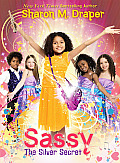
I attended one of the best conferences ever last week. My husband,
Scott and I attended
November Learning's BLC conference in Boston. WOW! It was an amazing experience. Every minute was worth it.
Alan November and his staff ran an unbelievable conference for educators across the world. This conference was one that I had heard about for a while and one that seemed worth going to. I had heard so many good things. When I first heard of Alan November and had the chance to hear him when he spoke in Ohio, my friend,
Bill Bass said he was a "Presenter Ninja"! After hearing him speak and hearing more about BLC, I knew I had to go. Not only is Alan November a Presenter Ninja, but he is also a Conference Planning Ninja. He runs a conference that is life-changing for many who attend. It was not my usual--I typically attend literacy conferences and have been immersed in the literacy world for a while. One of the things I love about what Web 2.0 tools are allowing us to do is to connect groups of people that might not normally connect. So this was a new kind of learning for me and I am so glad I stretched myself a bit.

The conference was really not a tech conference, but more about learning and education. One of the things that was important to me was that every speaker had the same beliefs and philosophies about education and the same optimism about what is possible. Technology was definitely a part of everything, but the way tech is being used by the experts here is based in good learning theory. The belief in children and learning was ubiquitous.
Every minute was amazing. Every single session that I attended was worthwhile and gave me so much to think about.
All of the
keynote speakers that we heard were amazing. The morning keynotes were given by
Mitch Resnick,
Michael Wesch, and
Rahaf Harfoush. I can't even begin to share all of the thinking these people inspired.
Adora Svitak was an afternoon keynote that I heard. I will post more about Adora later this week.
The conference also gave me an opportunity to hear, in person, some people who I have been learning about through blogs and twitter for a while. It was such a great experience to hear presentations given by so many people who have shared their work so willingly online. I will share more as I make sense of all I learned, but if you are looking for new people to follow or learn from, the people I heard have so much to offer through their blogs, twitter accounts, etc.
Since I took the semi-new job as a librarian,
Joyce Valenza's work has been so important to my own thinking. Even though she is a high school librarian, her vision for her role has been very inspiring to me. I was able to hear two of Joyce's sessions at BLC and they were amazing. She shared about 10,000 new things--tools, sites, ideas that I need to explore further. If I could just be like Joyce Valenza in my own role...She definitely gave me so much to work toward.
I have been an
Angela Maiers fan for a while. We share similar beliefs about elementary literacy instruction. She was actually one of the people who encouraged me to attend the conference and it was great to meet her in person. I was able to attend her session on writing (which I will write more about later this week). She has so many great resources on her site and it was powerful to hear her thinking in person.
I was also able to hear
Lee Kolbert. So many of us in Dublin follow her on Twitter and read her blog regularly. It was great to hear the honest work that she is doing with kids. She is doing such amazing things with her students and was honest about the challenges that come with web 2.0 and elementary kids. Loved meeting her too!
I was also able to hear
Marco Torres and
Jeff Utecht. Marco gave me so many ideas about film and documentaries and Jeff Utech spoke about blended classrooms.
I also found new people to learn from:
Kathy Cassidy, an amazing 1st grade teacher.
Sue Miller and
Valerie Becker from http://www.westtisbury-ma.gov/ who shared the work done in Sue's 5th grade classroom. (4 students presented with them in this session.)
Zoe Sprankle (
Bob Sprankle's daughter) was a part of Angela Maiers' session. I will be sharing more about what I learned from her later in the week.
Shelley Paul shared her work with teachers and her course on teaching Web 2.0 tools. I had not heard her before but it was clear that her work is so powerful for teachers.
I captured pages and pages of my thinking on Evernote and can't wait to dig in and make sense of it all. I also took lots of pictures, as did other BLC10 participants.
I will be sharing more about the conference throughout the week. I have not had a learning experience like this one in years. I am anxious to make sense of it all and to continue my learning. The dates for 2011 are already set for late July and I am already looking forward to it. This conference is rather addicting. I would HIGHLY recommend it to anyone who wants an amazing learning experience.













